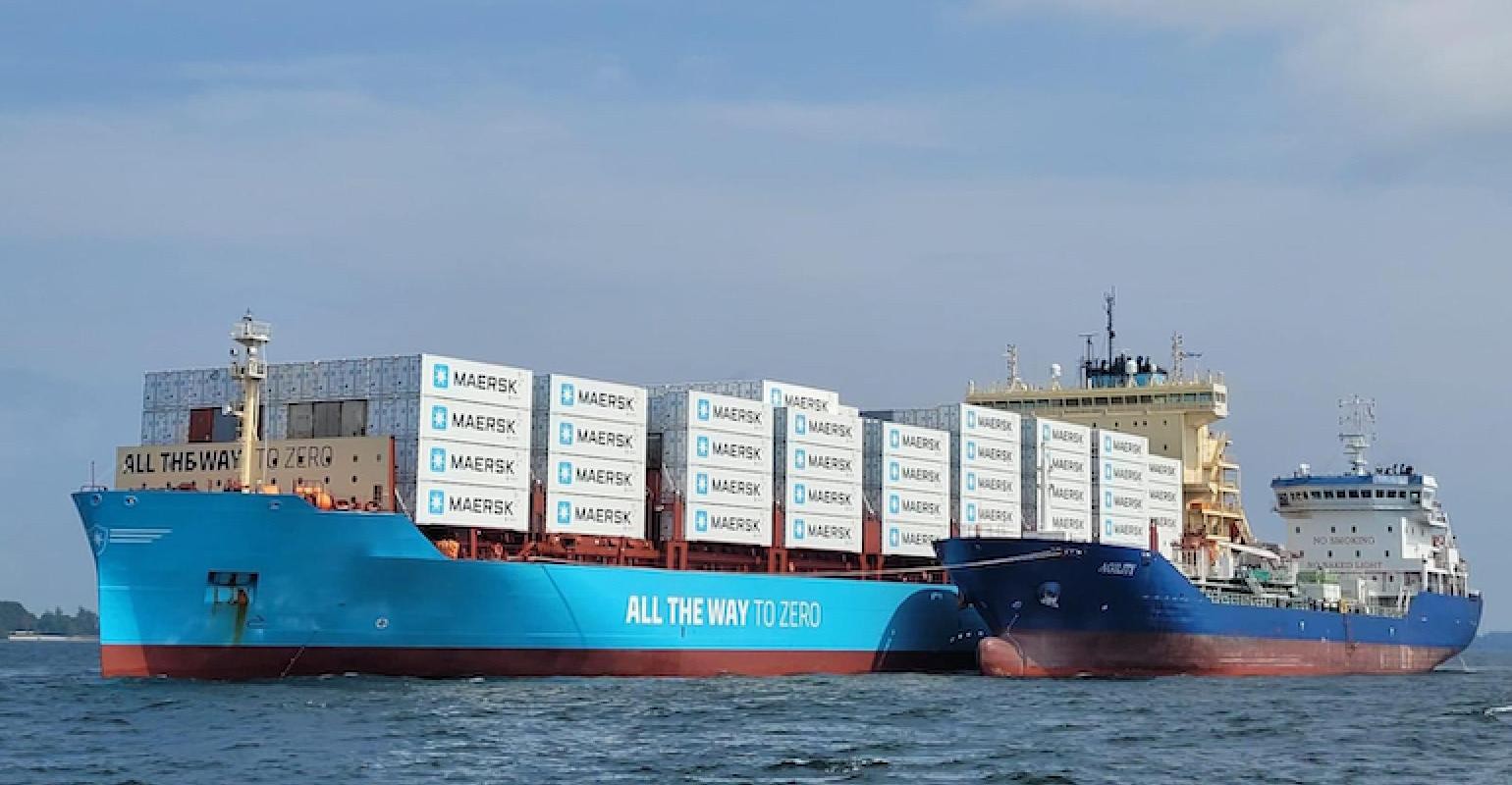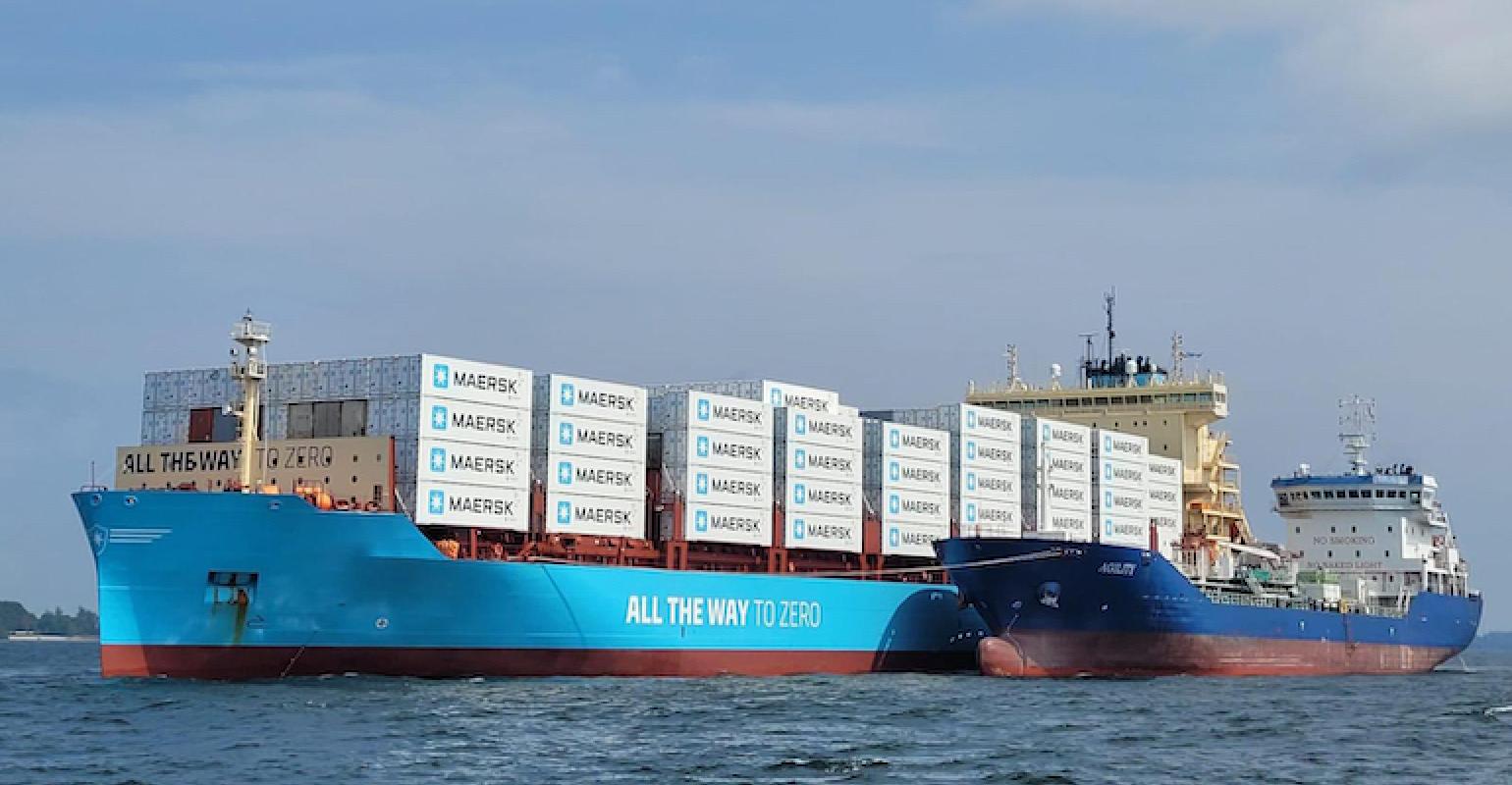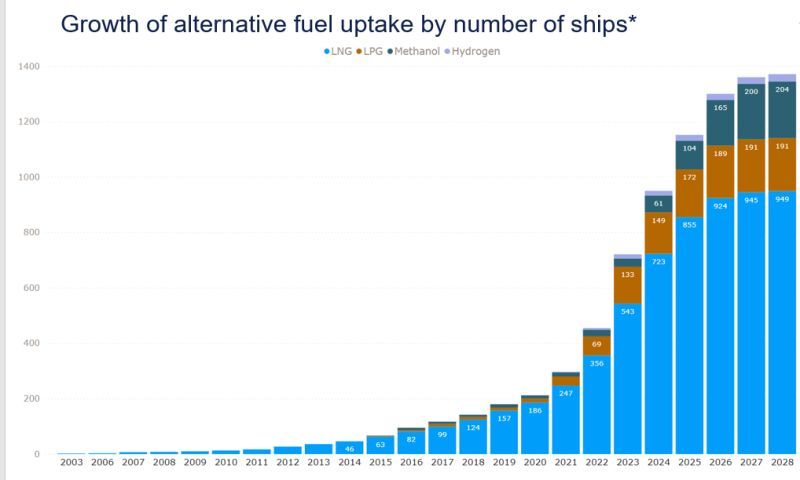根据替代燃料洞察平台(DNV AFI)的最新数据,在7月份签订的62份替代燃料船合同中,有48份订单是以甲醇为燃料的合同,其中包括了15份改装合同。
这一数字远远超过了本月签订的14份以液化天然气为燃料的船舶合同,也间接表明甲醇作为船舶的燃料越来越受到欢迎。
在目前,204艘甲醇燃料船订单仍远远落后于液化天然气燃料船的949艘合同,且不包括液化天然气运输船。但本月的数据表明,这一差距正在不断缩小。
DNV海事业务的首席咨询顾问Martin说:“甲醇动力船舶的订单已经大幅突破了上个月的纪录,现在已经突破了200搜的大关。”
“甲醇燃料大量的建造和改装新订单正好恰逢世界上第一艘甲醇燃料集装箱船的交付和第一份船舶绿色甲醇燃料供应协议的签署。”
第一艘甲醇燃料集装箱船:马士基航运的新支线船Laura Maersk上个月开始了从蔚山到哥本哈根的处女航,所使用的燃料就是绿色甲醇。
今年早些时候,船级社的业务发展经理Christos Chryssakis表示,甲醇既不比液化天然气好,也不比液化石油气差,但它具有不同的特性,这使它对某些船型具有吸引力:
建造成本较低,且不需要增压或低温储罐和燃料供应系统。
但这种燃料确实需要比石油多2.5倍的空间。
确实,在当今世界上大多数甲醇的颜色都是由煤炭或天然气生产,而这两种物质都不能很好地减少碳排放。
Chryssakis估计称:与海洋天然气相比,化石甲醇实际上使温室气体排放的生命周期增加了约10%。
另一方面,该顾问还表示,液化天然气燃料可依靠发动机技术提升将此类排放量减少10%-20%。
如今的国际海事组织法规中,只涵盖了从油箱到螺旋桨的石油燃料所造成的排放,因此对甲醇燃料的应用产生了有利影响。
然而,欧洲的新法规可能于2025年生效的《燃料欧盟海事倡议》,将基于打造良好的尾流排放而对化石燃料进行处罚。目前,还没有大量的绿色甲醇。
英文原文
Methanol leaps forward in alternative fuel league table
Of the 62 alternative fuel ship contracts placed in July, 48 orders stipulated methanol as fuel, including 15 retrofits, according to latest figures from DNV’s Alternative Fuels Insight (AFI) platform.
The figure far exceeds the 14 ship contracts with LNG as fuel that were placed over the month and illustrates that methanol as fuel is becoming an increasingly popular option.
There are now 204 methanol-fuelled ships on order, still a long way behind the 949 contracts for LNG-fuelled vessels, excluding LNG carriers. But the month’s figures indicate that the gap may be closing.
DNV’s Principal Consultancy in the Maritime Advisory business, Martin Wold, said: “Beating last month's record by a solid margin, orders for methanol-powered vessels have now jumped past the 200 mark.
The significant number of new confirmed orders and retrofits for methanol coincides with the delivery of the world’s first methanol-fuelled container vessel and the signing of the first bunker supply agreement for green methanol for ships.”
Earlier this year, the classification society’s Business Development Manager, Christos Chryssakis, said that methanol is neither better nor worse than LNG but it has different properties which make it attractive for certain ship types.
Capital costs are lower because there is no need for pressurisation or cryogenic tanks and fuel supply systems. But the fuel does require about two-and-a-half times more space than oil.
However, most of the world’s methanol today is ‘brown’ or ‘grey’, produced from coal or natural gas, neither of which reduce well-to-wake carbon emissions.
Chryssakis estimates that fossil methanol actually increases the lifecycle of greenhouse gas emissions by about 10% compared with marine gasoil.
LNG, on the other hand, cuts such emissions by 10-20% depending on engine technology, the consultant said.
Today’s IMO regulations only cover tank-to-propeller emissions and therefore give a favourable skew to methanol performance.
However, new regulations in Europe, such as the bloc’s FuelEU Maritime initiative due to enter force in 2025, will penalise fossil fuels on the basis of well-to-wake emissions.
Chryssakis also notes that green methanol is not available in significant quantities today.
However, Maersk’s new feeder ship, Laura Maersk, set out on her maiden voyage from Ulsan to Copenhagen last month, fuelled by green methanol.
The vessel was bunkered with OCI HyFuels ISCC-certified green methanol with supplies of the green fuel available en route.
Odfjell SE, which helped to arrange the supply of green methanol in Ulsan, is the transport and storage partner
免责申明:本文来源:seatrademaritime网站,数据来源:DNV AFI,如有误差以英文为准,仅代表作者观点,不代表中国海员之家立场。其真实性及原创性未能得到中国海员之家证实,在此感谢原作者的辛苦创作,如转载涉及版权等问题,请作者与我们联系,我们将在第一时间处理,谢谢!联系邮箱:cnisu@54seaman.com



 联系我们人工客服
联系我们人工客服



















 :1391995811
:1391995811


评论 (0人参与)